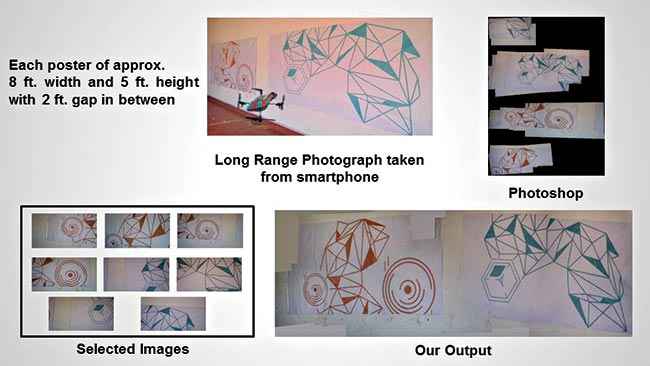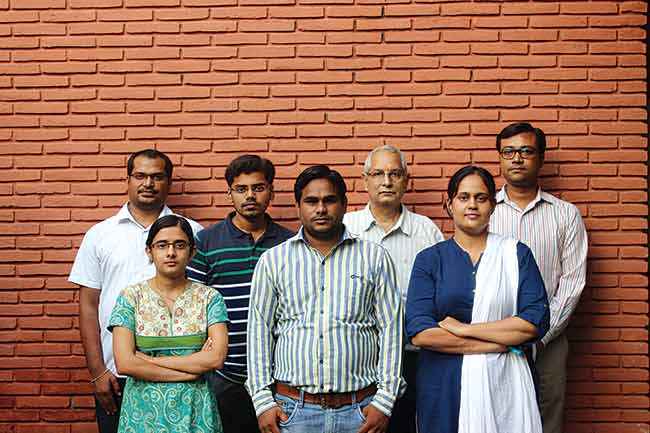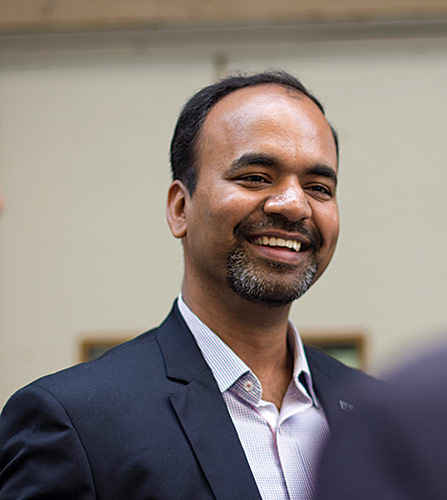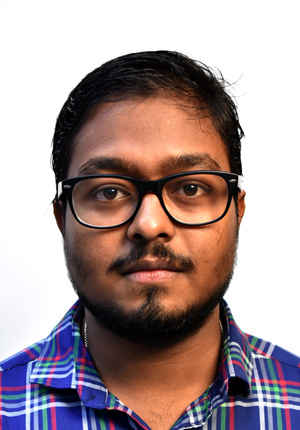5 amazing projects and research ideas from top Indian Universities

Science and technology have always been important in India, and even today, the world is taking note of India – ISRO’s monumental achievements with its space program and Indian scientists and innovators are at the forefront of global organisations. India has always held the torch of scientific and technological research high. However, it’s not just our government and scientific organisations that are doing things to make us proud, but also our leading institutions. This article will look at just a few of the very interesting things happening in educational institutions across the country.
The eyes of a Quadcopter
Drones are the in thing now, and not just because they’re cool. They’re especially important when it comes to imaging an extensive building, or when an inspector wants to examine defects in, say, the iconic Bandra-Worli Sealink.
While panoramic mosaicing is, in essence, a solved problem, there are still problems – say, when there isn’t too much difference between images and not enough distinguishing features are viewed. A team of researchers from ViGIL Lab, Computer Science and Engineering Department, IIT Bombay has come up with a method to overcome these drawbacks and further extend the imaging capabilities of quadcopter cameras.
They have developed an algorithm to achieve their results with image panoramas. “First, the captured video contains a large number of images – these are summarised by our algorithm to get a small set of images that will encompass the complete scene under interest,” explains Prof. Sharat Chandran, CSE Dept, IIT Bombay. He continues, “These images when placed at proper positions using the IMU (Inertial Measurement Unit) data present on the quadcopter will provide a final mosaic”.
A demonstration of the panorama creating technique
A big problem with current devices is power. Due to limitations of batteries and time required to cover scenes in detail, we are not able to image large scenes using just one quadcopter. In such cases, the team proposes the use of multiple quadcopters that can image a large scene collaboratively. According to Meghshyam Prasad, Research Scholar, IIT Bombay, “We divide the scene into multiple parts, and each part can be covered by one quadcopter. In this scenario, every quadcopter should be able to reliably identify every other quadcopter. This can be achieved by placing fiducials on quadcopters. Fiducials are commonly placed in environments to mark a uniquely identifiable object in the scene. However, current fiducials, such as AR tags, are not designed to handle blur, which is introduced due to jerky motion of inexpensive quadcopters. We have designed blur resilient fiducials. So, not only can each quadcopter identify other quadcopters, we can even instruct quadcopters according to the code embedded in the fiducial on it.”
While imaging for personal consumption or inspection has its uses, they have also considered an important public health issue. One of the major reasons for the dengue health hazard is the number of locations where one can find stagnant water – usually found in uncovered gutters or terraces of high-rise buildings, or other areas that are hard to reach and access. The team has proposed the use of a quadcopter to inspect such areas and identify stagnant water patches using a novel optical flow technique.
A lean MOOC platform
Software and programming developments over the last two decades have changed the Earth as we know it. One such development is the emergence of MOOC (Massive Open Online Course) platforms. The New York Times labelled 2012 as the year of the MOOC. One of the problems with MOOCs is their inability to cope with low-bandwidth and low-computing power situations. In an attempt to solve this problem, a team at IIT Kanpur are working on mooKIT – an MOOC management system being worked on by Prof. T V Prabhakar and his team.
Existing MOOC software (such as openEdx) are complex to host, manage and adapt to local needs. mooKIT aims to change that. It is targeted specifically at developing nations and has already been used in 12 courses in India and abroad. The most recent ones are an MOOC on History and Philosophy of Science by the National Open University of Nigeria. mooKIT has also been adopted to run courses in the blended mode (Flipped classes) at IIT Kanpur.
The connectivity challenges of users in a developing country include frail, unstable connections that aren’t able to stream video, and are expensive to boot. mooKIT has an indicator showing the current bandwidth of the internet connection, quite like the bars we have on a cell phone. This gives a visual indication to the student if the connection is bad, and she can use other content delivery options that mooKIT provides – for example, stream only audio and play it in sync with the slides, which is often very close to the video experience. If the bandwidth is too low for that even, you can receive a call on the phone and listen to the audio from there!
The mooKIT team – Front(L-R): Revathy, Deepak, Tulika. Back(L-R): Sunil, Ravi,
Prabhakar, Gaurav
A unique feature is an integration with social networking platforms such as Facebook and Twitter. All discussions in the course automatically get posted on an FB group and also go out as tweets.
A very powerful analytics interface is available to give insights on course activities. Instructors get sophisticated information related to the level of involvement of each student, and also get predictive assessments related to these. Sentiment analysis can be performed on forum posts to analyse the satisfaction of students.
mooKIT is built entirely using open source technologies, and the core engine runs on the MEAN stack, making it extremely scalable.
Find malicious FB pages
Facebook is home to your friends and family, and also to hostile entities who post malicious content. Because Facebook is such a vital part of our lives, we need to identify and stop them.
Precog is a group of researchers from IIIT Delhi who work on different aspects of social networking (yes, the name is intentionally from Minority Report!). Prateek Dewan, Ph.D Student, Shrey Bagroy, an Undergraduate student, and Prof. Ponnurangam Kumaraguru (PK) from the group have worked on identifying such malicious pages that published untrustworthy information, misleading content, adult and child unsafe content, scams, etc., and have submitted their findings to at IEEE/ACM International Conference on Advances in Social Networks Analysis and Mining (ASONAM) 2016, where it has been accepted.
“We scanned close to 400 thousand Facebook pages and leveraged Web of Trust’s (WOT) crowdsourcing mechanism to identify pages which engaged in spreading any such malicious content. We identified over 600 Facebook pages which posted malicious content at least once in their one hundred recent posts. Upon comparing the behaviour of these 600 odd pages with an equal random sample of benign pages, we noticed that malicious pages were not only more active but also very well interconnected within themselves as compared to benign pages.”, explains Prof. Ponnurangam. He adds, “We also noticed differences in the textual content posted by malicious and benign pages. We then built an engine to automatically identify malicious pages from the benign ones. We used bag-of-words based neural network model which could automatically identify malicious pages with over 84 per cent accuracy, looking at only a hundred posts worth of textual content published by a page”
Professor PK from IIIT Delhi's Precog division!
Though the research is based on the last 100 posts of a particular page, it can be extended to the entire history of that page, depending on how much computing power is available. Plus, since malicious pages might switch to sharing benign stuff every now and then, a self-adaptive model is needed. As a whole, this method sets an exciting precedent for automatic content monitoring and filtering.
Arsenic purification
Availability of potable water has been one of the most persistent problems in India. And with growing industrialisation and lack of proper regulation, even pristine rural landscapes are falling into the categories of polluted areas. One such significant type of pollution is arsenic pollution in water bodies. In fact, Arsenic pollution in the Ganga- Brahmaputra fluvial plains in India and Padma-Meghna fluvial plains in Bangladesh and its consequences to the human health have been reported as one of the world’s biggest natural groundwater calamities known to mankind, with levels being even five times greater than the acceptable safe levels set by WHO.
Prof. Pradeep T and his team from Madras have developed a nanotechnology-based water purifier that can allow the provision of arsenic free water at affordable rates in any arsenic affected region in the country. His group found that noble metal nanoparticles can completely degrade halocarbons into amorphous carbon and metal halides. This discovery has led to the world’s first nanochemistry based filter for pesticide removal. His group developed several technologies to remove contaminants from drinking water. Combining several such materials, an all-inclusive affordable drinking water purifier has been developed. This technology is being implemented now in the arsenic affected regions of India. About 400,000 people are benefitted from these installations. To take such technologies forward, a company has been incubated with the participation of IIT Madras. This activity is now being expanded globally.
The value of research can not be underestimated
This technology was successfully implemented last year in West Bengal providing arsenic-free water for just 5 paise per litre. “We have developed new materials with which almost all health-related contaminants in water can be removed to the required extent. This means that we can deliver quality water effectively. It has been possible to do this at the affordable cost as all we do is to pass the contaminated water through a filter.” explains Prof. Pradeep. He continues, “Our research has already touched several millions of people. Over ten years ago we introduced a technology to remove pesticides from drinking water. That technology is estimated to have reached about 7.5 million people. Our arsenic technology has reached about 0.5 million people. It has been approved for national level implementation. More installations will come up soon.”
Nanofluidic particles
Medical devices are gradually getting smaller. Today, many of them are portable and also accurate (something we couldn’t have in the past). However, the race is on to go even smaller – to the nano level! One such project is by Surjendu Maity, Research Scholar, IIT Guwahati. As he puts it, “There are many advantages of using nanofluidic channels in medical sensing devices. For micro-sensing devices, the volume of sample is in the order of a microliter as opposed to the much larger volumes taken for analysis of diseases or biomarkers of diseases. When it comes to the nanochannel, the volume is in the order of a nanoliter or picoliter! We are literally taking molecules instead of wasting blood.” He goes on to add, “Even some rare diseases which are otherwise hard to detect, can be detected using this low cost, accurate and portable nanofluidic point of care testing device. It’s so small that it can be integrated into the electronics at chip formation and embedded in a wristwatch, or spectacles for example.” While the exact details of this work and its progress are still under wraps, Surjendu did tell us a prototype should be ready in about 5-10 years.
Surjendu Maity, Research Scholar, IIT Guwahati
In order to picture what this means, imagine a micro-syringe which will be integrated with a smart band or a smartwatch perhaps. That nano-tech based syringe will extract your blood without you even noticing, and monitor your health to warn you of any problems. You could set this to also upload reports regularly to your doctor so that he can alert you if certain levels are too high or too low. The only problem is that to manufacture such devices, you need high-end instruments (Electron Beam Lithographs, Mask Writers, Spin Coaters, FESEM, etc.) which are very expensive investments. It might be worth it if the government invested in these in order to help us become a healthier country.
This article was first published in August 2016 issue of Digit magazine. To read Digit's articles first, subscribe here or download the Digit e- magazine app for Android and iOS. You could also buy Digit's previous issues here.










